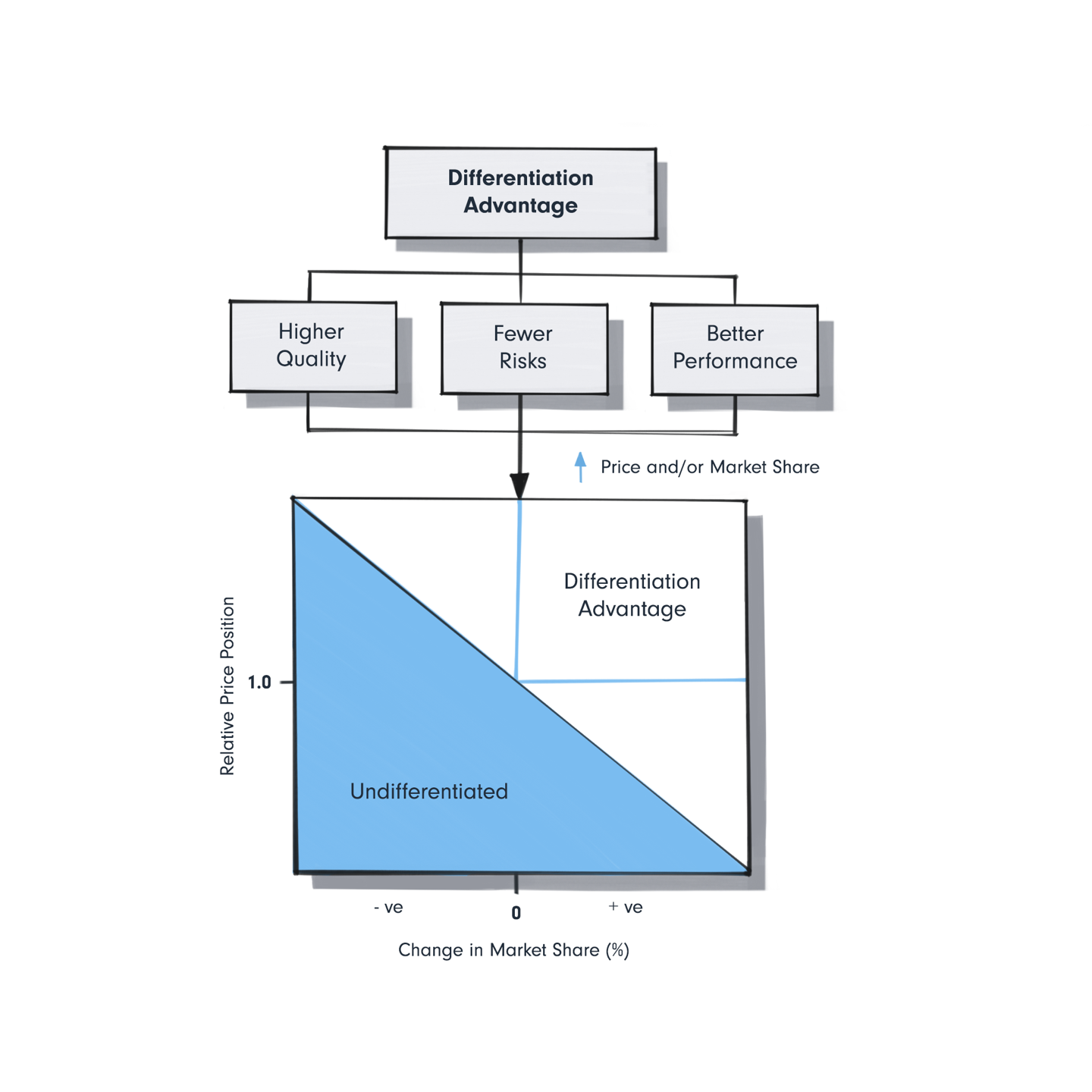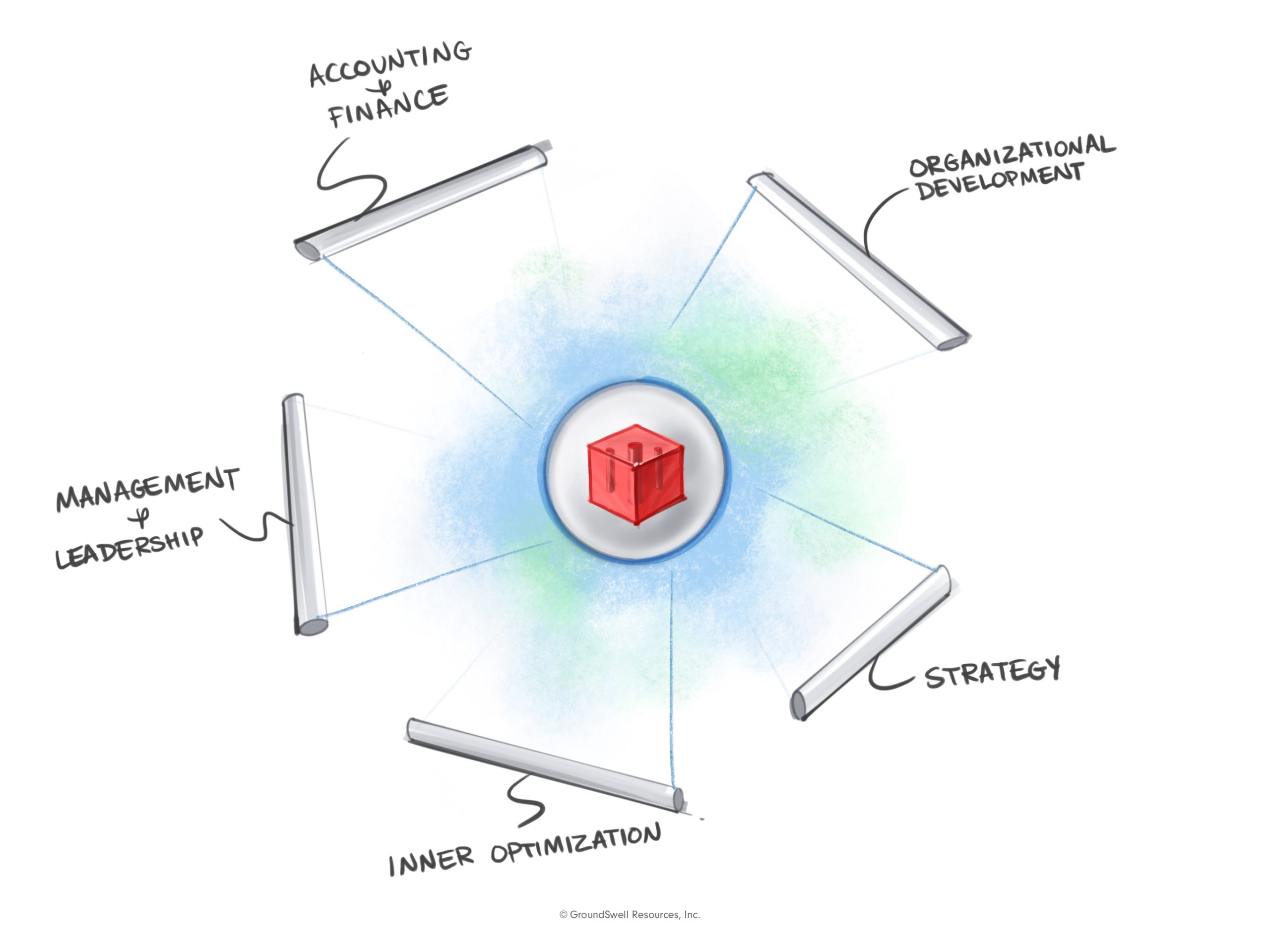You can beat out your competition with a differentiation advantage, a fancy way of saying having a strong brand. To quantify your differentiation or brand, ask yourself four questions:
- Can you increase your prices and keep customers?
- Can you lower your prices and gain customers?
- Do you have high prices relative to similar sized competitors?
- Do you have low prices and high market share?
Unfortunately, if the answer is no to any of these questions, your brand is undifferentiated. Your customers will typically switch products or services when they find a lower priced alternative.
If the answer is yes to any of these questions, you have a brand, but you don’t know if it’s strong.
Quantifying a Strong Brand
You have a strong brand or a differentiation advantage if you have high prices and high volume. If not, unfortunately you’re suffering from wishful thinking.
The image below visualizes and synthesizes answers to the questions above and gives you a map to pinpoint and quantify the strength of your brand relative to your competition.
If you’re in the white section of the chart your brand is differentiated.
You have a differentiation advantage, or a strong brand, only if you’re in the upper right-hand quadrant outlined by the light blue vertical and horizontal lines.

The chart also visualizes the three underlying drivers of strong brands.
A differentiation advantage or strong brand is in your customers’ eyes, not yours. They need to answer the following questions with a definitive yes:
- Quality. Do they think your product or service has better quality than your competition? Let’s take watches for example. People will pay thousands for a Rolex but does the quality of a watch matter? Plastic vs. gold, etc. To Rolex owners it certainly does.
- Risks. Do they think your product or service has lower risks than your competition? In the case of watches, someone will buy a G-shock if they want their watch to work after jumping out of an airplane.
- Better performance. Do they think your product or service performs better than your competition? If your customers time 100-meter dashes, they better have a watch that accurately measures hundreds of a second intervals. A watch without a second hand probably isn’t an option.
According to Morgan Stanley1, Rolex recently grew their market share to over 30% partially by raising prices, putting them clearly in the upper right hand quadrant in the chart above.
Unfortunately, most organizations don’t have a differentiation advantage like Rolex.
Most find themselves in the lower blue quadrant if they objectively assess their pricing and market share relative to their competition.
It’s not easy but creating a brand is doable; it takes time and effort and we’re here to help.
Our Fractal Flywheel of Brand & Marketing DevelopmentSM visualizes the step-by-step process we’ve developed to create both the fundamental strategy that underlies a strong brand as well as the myriad of required external touch points, resources and systems.
A strong brand doesn’t just happen with a nice-looking logo. Building a strong brand isn’t a feel-good process; it’s a systematic iterative process.

Fractal Flywheel of Brand & Marketing Development℠
And that process starts with clarifying and documenting an organization’s Business FoundationSM.

Business Foundation℠
Our Business FoundationSM process isn’t direclty a branding offering even though it’s essential to a strong brand. it’s much more than that. It’s six straight forward questions focused on determining how you’re different than your competition.
It’s a simple question but often challenging to answer without a formal process. Our visual thinking process detailed below facilitates the answer efficiently and effectively with hand-drawn sketches on a white board. We then post each sketch next to each other on a wall to “see” the connections across the various sketches to get your ultimate answer, how is your organization different.

Our facilitated process answers the question and quantifies the specific quality, risk and performance attributes of an organization’s product or service that creates a strong brand.
If you’re brand is undifferentiated, we can help.
Developing and implementing a differentiation advantage or strong brand is a vital part of our Business Ownership PlatformSM that creates Organizational AlphaSM (higher return and lower risk across) in your organization and your life.

Business Ownership Platform℠
Schedule a call to learn more.


